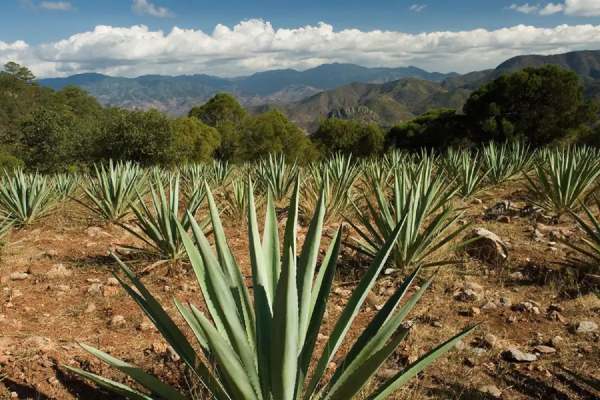Agave varieties are succulents with large leaves that have pointy tips. There are more than 200 species of agaves, ranging from sizes of 6 inches to 12 feet wide. Because of their modest size and compact root system, some agaves make an excellent choice for growing in containers.
One good thing about these plants is that they require infrequent watering and they do well in the summer, even in the sun. We can find them in many garden spaces, big or small, along with patios, poolside, and entryways. Their spiky shapes add great interest wherever they are placed.
Here are 10 species of this amazing plant for smaller areas with their tolerances, exposure requirements, and sizes so that you can ultimately decide which one’s for you.
1. ‘Compacta’ Queen Victoria Agave
This Mexican native species is the smaller version of the slow-growing Queen Victoria agave. It barely reaches 12 inches wide. It has dark green leaves with bright white margins that make it very attractive. Unlike many other species of agave, this variant doesn’t produce offsets. It looks great when planted in groups of three or five.
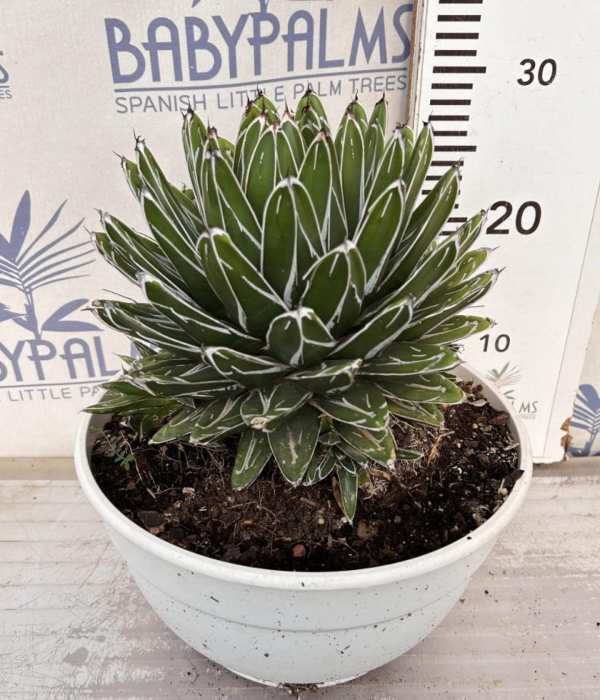
Talking about where to grow this plant, it is best to keep it in full sun. However, it can also handle filtered shade for a few hours a day. A mature size of this plant can grow up to 8 inches to a foot tall and wide.
Also, Read 6 Common Indoor Plants Care Mistakes You’re Making, And Tips to Avoid Them
2. Blue Glow Agave
Blue Glow is a hybrid of Agave attenuata and Agave ocahui. This new variant has taken the gardening world by storm. While it looks nothing like its parents, their mixed genes created an agave that has dark blue-green leaves with yellow and red margins that seemingly glow when backlit by the sun.
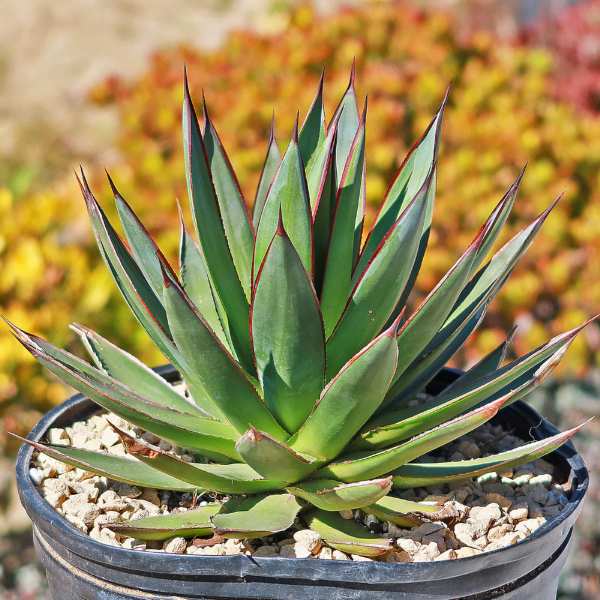
It also prefers full sun but can handle filtered shade for a couple of hours. A mature size will grow up to 2 feet tall and wide.
3. Black-Spined Agave
Black-Spined agave has powder blue leaves and maroon tips that provide great color contrast in the garden. Unlike Victoria, this agave produces several offsets creating a clumping appearance. Its narrow leaves and open rosette growth habit add a great color combination to containers.
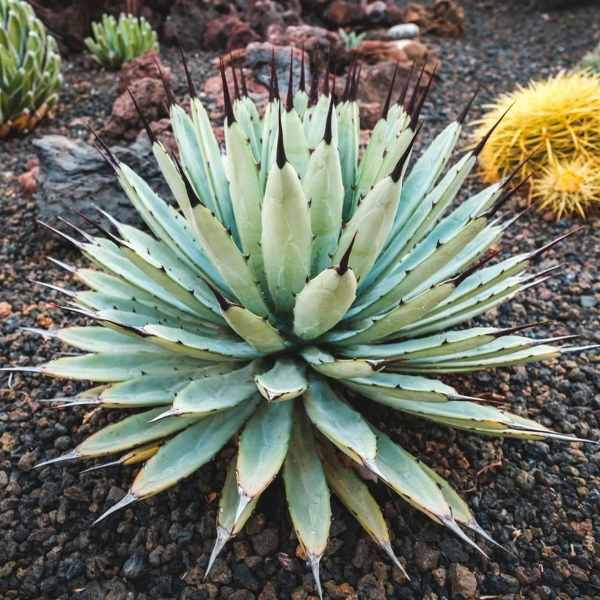
It thrives in full sun to filtered shade and can grow up to 10 to 16 inches tall and wide.
4. Agave Schidigera
This central Mexico native with the curly white fibers that grace this small agave’s bright green leaf edges is what captures people’s attention. Talking about its light requirement, it can tolerate both full sun and light shade.
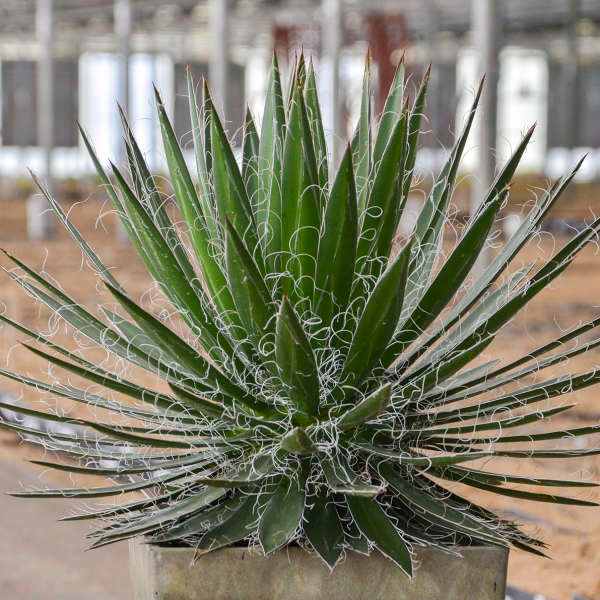
It can grow up to 1 foot tall and 1 foot to 2 feet wide.
5. King Ferdinand Agave
Many people mistake this agave with Queen Victoria as both have dark green leaves, similar white margins, and sharp terminal tips. In the past many considered King Ferdinand agave to be a naturally occurring hybrid of Agave victoria-reginae; which is now proven not to be true.
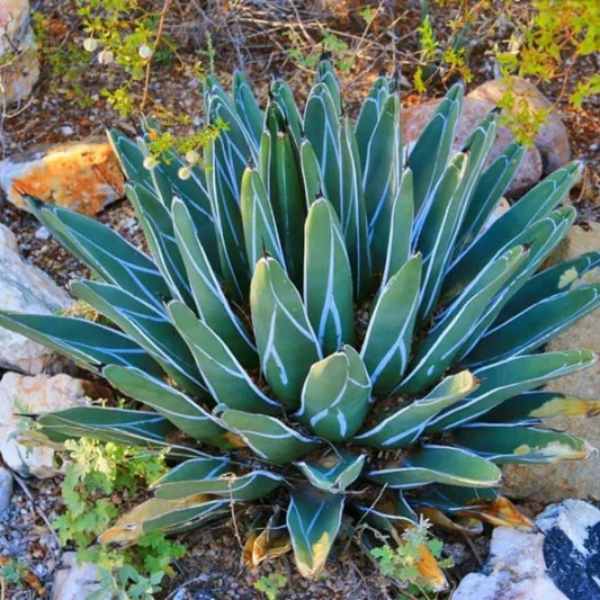
Because of its unusual shape and open rosette form it looks great when planted singly in containers. It requires full sun and grows up to 1 foot to 2 feet tall and wide.
6. Agave Lophantha
This plant is native to the Rio Grande area of Texas and adjoining Veracruz, Mexico. The leaves of this plant are a lush green color and curved maroon teeth along the edges. The center of the leaves often has a lighter stripe that runs through the length.
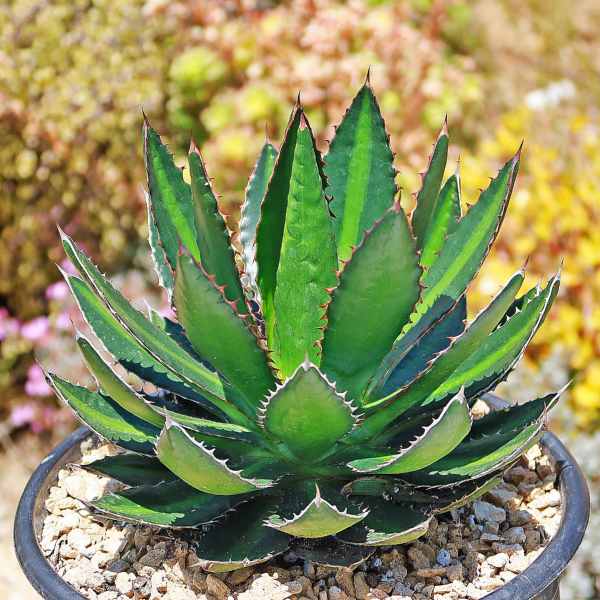
There are lots of varieties of lophantha which include Quadricolor which has yellow margins on bright green leaves. If you plant it with other succulents you might get the benefits. Under appropriate temperatures, a mature size can grow 1 foot to 2 feet tall and wide.
7. Artichoke Agave
This plant is native to Central Mexico including Durango. With its wide blue-gray leaves with maroon spines, it strikes a perfect resemblance to artichoke leaves, hence this Mexican native’s common name.
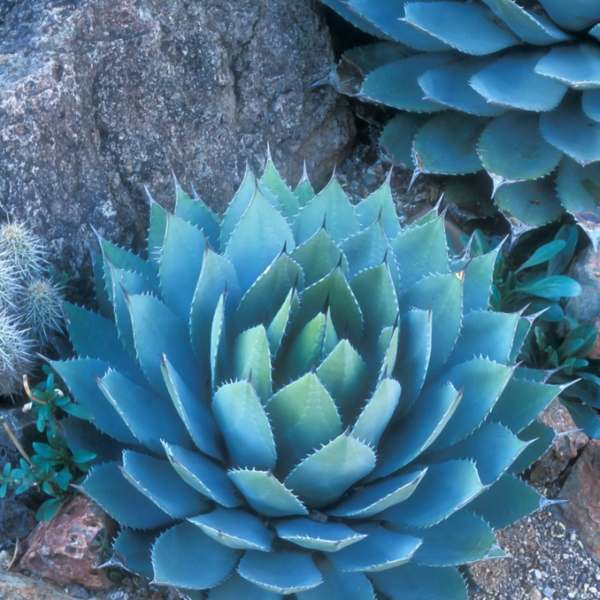
With people getting enchanted by its beauty, Artichoke has become a popular name for container gardening. It also produces some offspring which can be further used elsewhere in the garden or you can gift them to your friends as well. A mature size can grow up to 3 feet tall and wide.
8. Twin-Flowered Agave
This species is native to Nayarit, Mexico.
What sets this plant apart from other plants is its finely textured bright green leaves. Twin-flowered agave tolerates a range of exposures from full reflected sun to full shade, which makes it an asset in most situations.
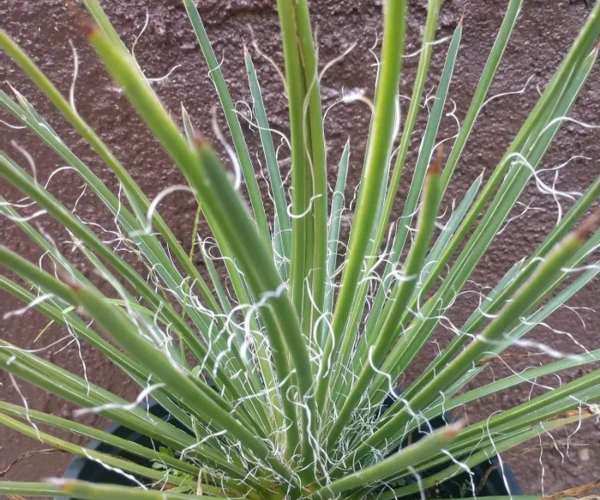
Like Artichoke, this plant can also grow up to 3 feet tall and wide.
9. Mescal Ceniza
The most interesting part of this midsize agave plant is its decorative leaves and its other features including well-defined imprinted patterns and deeply toothed edges, which add a wavy texture to the landscape. Mescal ceniza’s blue-gray color adds a visually cooling element to hot outdoor spaces.
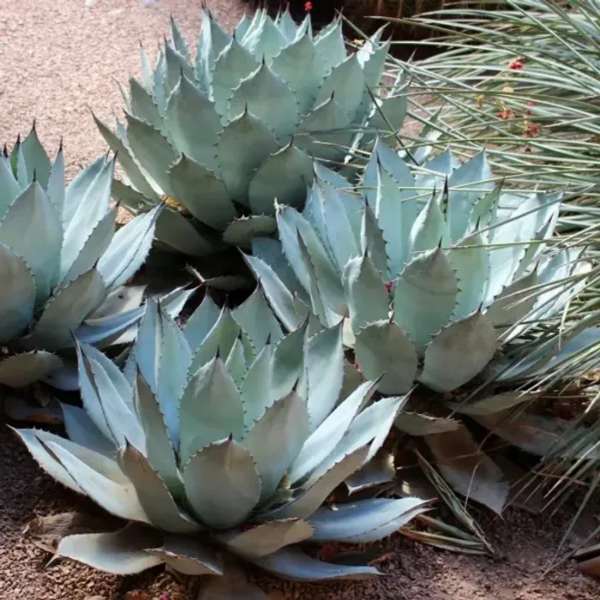
It requires full sun and can grow up to 2 feet tall and wide.
10. Queen Victoria Agave
Queen Victoria Agave is often called the most beautiful agave and totally lives up to its royal name with dark green coloring and vibrant white markings. The tight rosette shape and smooth leaf edges that terminate into a single spike add to Queen Victoria’s visual appeal.
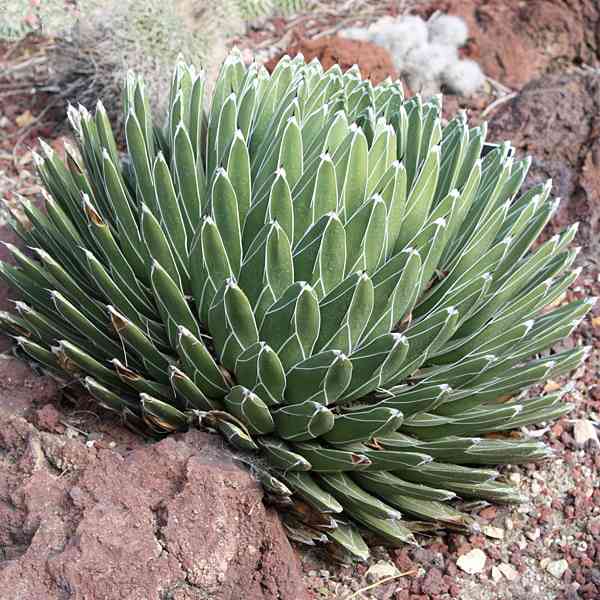
Under full sun, the queenly species can grow up to 18 inches tall and wide.
Agave Growing Tips
- Select a pot, with a drainage hole, that is a little larger than the root ball, as agave varieties do better when their roots are slightly crowded.
- No saucer is needed and is discouraged, as sitting water can lead to overly moist soil.
- All agaves require well-drained soil, which can be created using one part compost, one part sand, and one part perlite or pumice.
- Water when the top two-thirds of the soil has dried out. Water deeply, until water runs out the bottom.
- Watering should be done weekly in summer when temperatures are above 100 degrees Fahrenheit and very little in winter.
- Fertilize once a month during the growing season, which is typically late spring and summer.
- Repot every three years or so once the roots have little soil left to grow in.
FAQs
Q. Why should we grow agave varieties plants?
A. There are many reasons why we should consider planting agave varieties. One major reason is they are known for their architectural forms as they provide a dramatic element to any garden or space.
They are also low maintenance, drought tolerant, fire resistant, and animal resistant.
Q. When is the best time to plant agaves?
A. Spring and early fall, when the temperature is mild is the best time to plant Agaves. You should not plant them during hot summers as it can cause stress to the plants.
Q. Where to plant agaves?
A. You have to plant agaves where there is enough sun. Plus these succulents grow easily in slightly acidic, sandy, or gravelly, well-drained soils.
Q. How fast does agave grow?
A. It depends on the species and growing conditions of the species. Generally, these plants are slow-growing and might take several years to mature and produce flowers.
Q. What are agave plants used for?
A. They are used for producing tequila, mezcal, and other alcoholic beverages. The sap of some species is used as a sweetener and a dietary fiber.
Q. What are the negative impacts of agaves?
A. Some of them might cause skin irritants and can cause rashes in some plants.
Also, Read Top 10 Best Microgreens to Grow at Home!
